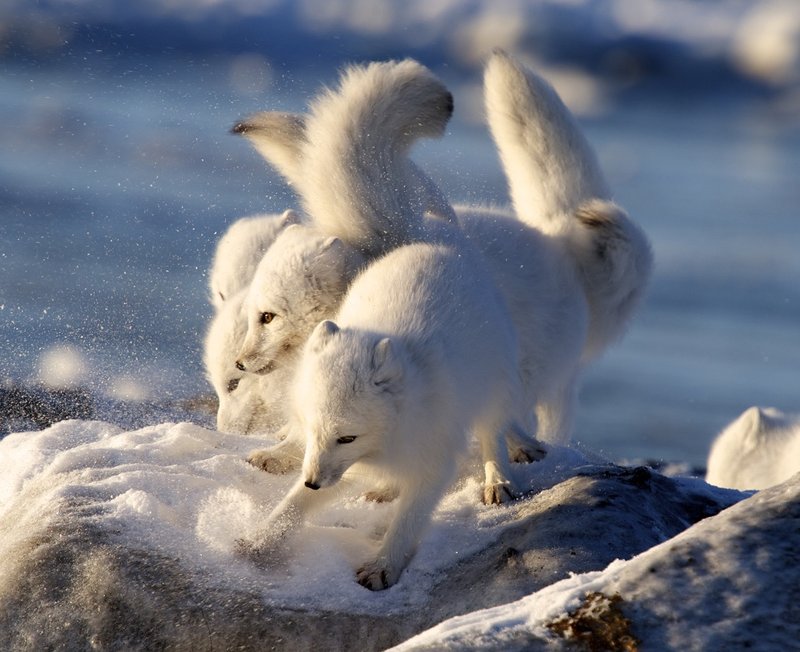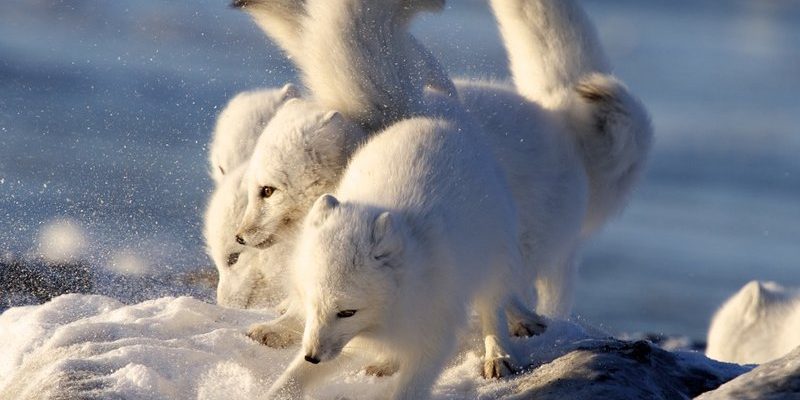
First off, encountering an Arctic fox can be an exhilarating moment, but it also raises some important questions. How should you react? Is it safe to approach? What if the fox approaches you? Let me explain the best ways to handle this exciting—and potentially nerve-wracking—situation.
Understanding the Arctic Fox’s Behavior
Before diving into what you should do if you encounter one, it’s good to understand a bit about the Arctic fox’s behavior. These small, sturdy creatures are incredibly curious and smart. They thrive in extreme cold, using their thick, beautiful fur for insulation. Arctic foxes are often seen alone or in small family groups. They use their keen sense of hearing to hunt for small prey under the snow, like lemmings and birds.
When faced with a potential threat, an Arctic fox might display different behaviors. They could freeze in place or try to sneak away to avoid confrontation. Here’s the thing: they aren’t typically aggressive, so you probably won’t be in any immediate danger. Still, it’s important to remain aware and prepared.
In short, the Arctic fox is more interested in scavenging food and staying warm than bothering humans. Knowing this can ease your worries if you spot one during your adventure in the wild.
Stay Calm and Observe
If you spot an Arctic fox, your first instinct might be excitement, and you’d be right! These animals are fascinating. However, it’s essential to stay calm. Take a moment to simply observe. This gives you a sense of the situation and allows you to appreciate the beauty of the animal in its natural habitat.
When you see a fox, try to keep your distance. They’ve evolved to avoid human interaction and may see you as a possible threat. Here’s a little tip: slowly back away while keeping your eyes on the fox. Avoid sudden movements that might startle it. If the fox doesn’t seem threatened by your presence, you can take a few moments to watch its behavior or even snap a few photos from a safe distance. Just remember: no flash photography! The bright light can be disturbing.
Also, be aware of any food or trash you might have in your pack. If you’re in an area known for wildlife, it’s best to keep snacks stowed away to avoid attracting curious animals.
Don’t Approach the Fox
You might feel tempted to get closer for a better look or even to pet the fox, but this isn’t safe for either of you. Wild animals, even the cute and fluffy ones, can be unpredictable. Approaching could stress the animal out, leading it to act defensively.
Moreover, Arctic foxes can carry diseases like rabies or mange, which can pose risks to humans and pets. So, the golden rule here is: don’t get too close! Enjoy the moment while respecting their space. Instead, think of it as a fantastic opportunity to appreciate wildlife from a distance—and maybe snap a few great photos.
Avoid Feeding the Fox
Many people think feeding wild animals is a kind gesture, but feeding an Arctic fox can lead to serious problems. When animals get used to human food, they may start to rely on it, losing their natural hunting instincts. This can lead to malnourishment and danger for the animal as it may become too comfortable around humans.
If the fox approaches you in search of food, it’s crucial to remain firm. Do not feed it! Instead, calmly wave your hands and make noise to encourage it to wander off.
Remember, feeding wildlife can also lead to more significant issues like overpopulation in certain areas and increased interaction with humans, which can ultimately lead to harm for the animals.
Take Notes for Wildlife Conservation
If you come across an Arctic fox, it’s worth jotting down your experience. Documenting wildlife encounters helps scientists and conservationists understand animal behavior, movements, and habitats. Not only can your notes contribute to research, but they might also inspire others to appreciate and protect these animals.
When taking notes, consider noting things like:
- The location and time of your sighting.
- The behaviors displayed by the fox (e.g., hunting, playing).
- Interactions with other wildlife.
Letting others know about your experience can help raise awareness about the Arctic fox’s unique nature and the importance of preserving their habitats.
Contact Local Wildlife Authorities If Needed
Should you find yourself in a situation where the Arctic fox appears distressed, injured, or overly aggressive, don’t hesitate to contact local wildlife authorities. They have the expertise and resources to handle wildlife encounters safely.
If the fox seems unafraid of humans or is approaching people, it might be time to alert someone who can help. Wildlife managers can assess the situation and decide if action needs to be taken, like relocating the animal to a safer area.
Acting responsibly for the well-being of both the fox and yourself is vital. Wildlife authorities can provide guidance on how to maintain a safe distance and ensure that both humans and animals can coexist peacefully.
Enjoy the Experience Responsibly
Seeing an Arctic fox in the wild is a once-in-a-lifetime experience for many. So make sure to cherish it. Remember to follow the guidelines above, such as respecting the animal’s space, not feeding it, and documenting your encounter responsibly.
Enjoying nature comes with a responsibility to help protect it. By observing Arctic foxes from a distance and allowing them to be wild, you’re doing your part. So go ahead, take a deep breath, soak in the beauty, and feel grateful for the opportunity to witness such a remarkable creature in its natural habitat.
In conclusion, encountering an Arctic fox can be thrilling and memorable, and with the right approach, you can make the most of the experience. By staying calm, observing from a distance, and practicing responsible wildlife interactions, you’ll not only enjoy your adventure but also contribute to the conservation of this incredible species. Happy exploring!

